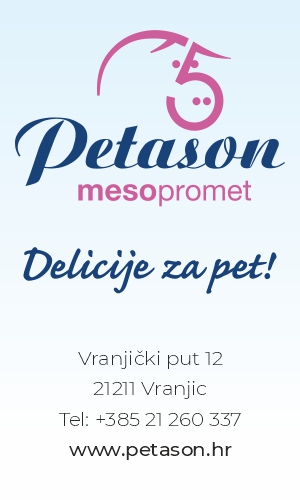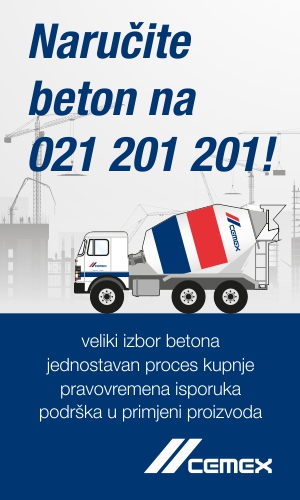Hrvoje Bubić: EFRA AVILA INTERVIEW
Efra Avila je multimedijski umjetnik iz Bolivije, specijaliziran za dizajn skulptura – zagonetki i testova za inteligenciju. Za SolinLive, Efra govori o svojoj domovini, Boliviji, kulturološkim razlikama i sličnostima, kao i o svojim skulplturama
To begin with, can you tell us about yourself? You are from Bolivia, by trade, you are a multimedia artist, which as well stands for a sculptor specialising in didactic and interactive wooden and metal installations.
I come from Bolivia, from South America. It is a country with 36 different cultures and languages. I am a member of the Inka culture. My origin has also influenced my profession. I studied at Universidad Amautica in La Paz and my mentor was Fausto Reinaga-Inka Rupaj. My field of speciality is designing didactic sculptures, that are in fact, a kind of IQ test. I create them in various materials: wood, stone, metal, plastic. My didactic sculptures are meant for young people to exercise concentration and to help the elderly keep their memory active.The main objective of my art is to induce people to think critically, to look for solutions to difficult and seemingly impossible tasks. My first works of art include Parque Urbano in La Paz and Parque Central in Sucre, Bolivia. Upon my arrival to Europe, I am scheduled to hold an exhibition at the Ethnographic museum in Prague, after which, my next stop will be Croatia.
You have travelled a great deal of the world, but you have been living in Split, Croatia for the past 20 years. How did people accept you in Split, why Croatia in particular, and what are the differences and similarities between Croatia and Bolivia?
I arrived to Croatia in the now far off year of 1996, first to Opatija for a holiday, where I met my wife, Ivana from Zagreb. In 2003, we decided to move to Dalmatia because we both love the sea, the cheerful people, and the clean air. In Split, we had our first daughter Ana, who is now 15 years of age and is currently attending the Art School, as well as the Music School. People in Croatia and Bolivia have a much similar character – they are both sociable, always ready to help. Nevertheless, there is the notable difference in which people in Bolivia are keen on standing up for themselves when some injustice is at hand, they are capable of changing the whole system. What I miss from Bolivia is the diversity of food. In Bolivia, just the potato has some 1500 different varieties. I miss some of the fruits and vegetables that are unavailable here.
You had exhibition at various artistic events, such as Adria Art Annale, EgoFree Festival, Almissa Open Air Festival, Green Forest Omiš. I would be grateful if you could tell us about this.
Since 2015, I have been a member of the Croatian Association of Fine Artists of Split and I often participate in various art events,festivals, workshops, performances, exhibitions… Among my first works of art in Dalmatia, I would single out the interactive didactic sculpture in the Marjan Forest Park. The city administration at the time called me to make the artwork, and I did so with the help of many volunteers.The tourist board of the city of Split recognised the value of this project, and thus my works on Marjan were fully advertised for six years straight in the VisitSplit brochure as the pride of Split. This was followed up by a project in Omiš, where my didactical sculpture was permanently installed in the Green Forest Festival at the main beach. Soon afterwards followed a project in Kaštela, more precisely in Kaštel Lukšić, where one wooden and three stone didactic sculptures were permanently installed. My most recent works of art are found at Ovčice beach in Split, which are three stone didactic sculptures.
Adding to the sculptures, is your interest in volunteering, specifically as an environmental activist (e.g. for Marjan) and as a performer at the opening of Adria Art Annale. Can you expand on this?
I am willing and always seeking to protect the rights of nature. I regret the fact that Marjan has been brought to the current condition. This should worry people in charge, but I think it is clear to everyone that the interests of nature are not everyone’s top priority. Every year I participate in Adria Art Annals, with an exhibition or unique performance. At the latest Adria Art Annals,my performance was inspired by the German scientist Andreas Kalcker and his struggle for the wellbeing of all people by using chlorine dioxide. I am thrilled by the prevention and treatment of illnesses as done by Prof. Kalcker. I have been using the same method for eight months as has my family too. I am glad to have discovered this alternative method.
Finally, what are your future projects, plans, ideas for 2021?
If everything is on track, I will have made the largest piece of artwork ever featured on an island in the course of this year, but I will make it a surprise as to what it is.
PRIJEVOD
Za početak, možete nam reći o sebi. Vi ste iz Bolivije, po struci ste multimedijalni umjetnik, što podrazumjeva kao i skulptor specijaliziran za didaktičke i interaktivne instalacije od drva i metala.
Dolazim iz Bolivije,iz Južne Amerike.To je zemlja u kojoj ima 36 različitih kultura i jezika. Ja pripadam kulturi Inka.Moje podrijetlo također je utjecalo na moju profesiju.Studirao sam na Universidad Amautica u La Pazu i moj mentor je bio Fausto Reinaga-Inka Rupaj.Specijalizirao sam se u dizajnu didaktičkih skulptura koje su ustvari vrsta testova za inteligenciju.Izrađujem ih u različitim materijalima:drvu,kamenu,metalu,plastici…Moje didaktičke skulpture mladima služe za vježbanje koncentracije,a starijima pomažu u održavanju memorije aktivnom.Glavni cilj moje umjetnosti je navesti ljude da počnu kritički razmišljati,da traže rješenja teških i naizgled nemogućih zadataka.
Među mojim prvim umjetničkim djelima su Parque Urbano u La Pazu i Parque Central u Sucreu u Boliviji. Dolaskom u Europu,izlažem u Etnografskom muzeju u Pragu,a nakon toga dolazim u Hrvatsku.
Proputovali ste dobar dio svijeta, no već 20. godina živite u Splitu, Hrvatskoj. Kako su Vas ljudi prihvatili u Splitu, zašto baš Hrvatska i koje su razlike i sličnosti između Hrvatske i Bolivije?
Došao sam u Hrvatsku sada već davne 1996.godine ,prvo u Opatiju na odmor, gdje sam upoznao svoju suprugu,Zagrepčanku Ivanu. 2003.godine odlučili smo se preseliti u Dalmaciju jer oboje volimo more,vesele ljude i čisti zrak.U Splitu nam se rodila kći Ana,koja sada ima već 15 godina i učenica je Umjetničke škole uz koju pohađa i Glazbenu školu.
Ljudi u Hrvatskoj i Boliviji imaju dosta sličan karakter-veseli su, druželjubivi, uvijek spremni pomoći.Ipak, razlika je u tome što se ljudi u Boliviji znaju izboriti za sebe kad je neka nepravda u pitanju,u stanju su promijeniti cijeli sustav.
Ono što mi nedostaje iz Bolivije je raznolikost hrane.U Boliviji samo krumpira ima oko 1500 različitih vrsta.Nedostajumi neke vrste voća i povrća kojih ovdje nema.
Izlagali ste na različitim umjetničkim događajima, kao što su Adria Art Annale, EgoFree Festival, Almissa Open Air Festival, Green Forest Omiš. Molim Vas recite nam nešto o ovome.
Od 2015.godine, član sam Hrvatske udruge likovnih umjetnika Split i često sudjelujem u raznim umjetničkim događanjima,festivalima,radionicama,performansima,izložbama…
Među mojim prvim umjetničkim radovima u Dalmaciji,istaknuo bih interaktivne didaktičke skulpture u Park šumi Marjan.Tadašnja uprava pozvala me da napravim svoja umjetnička djela i to sam i uradio uz pomoć brojnih volontera.Turistička zajednica grada Splita prepoznala je vrijednost tog projekta pa su moji radovi na Marjanu bili punih šest godina reklamirani u brošuri VisitSplit kao ponos Splita.
Nakon toga, uslijedio je projekt u Omišu,gdje su na glavnoj plaži trajno postavljene moje didktičke skulpture u sklopu Green Forest Festivala.
Ubrzo zatim slijedi projekt u Kaštelima,točnije u Kaštel Lukšiću,gdje je trajno postavljena jedna drvena i tri kamene didaktičke skulpture.
Moja najnovija umjetnička djela su na Ovčicama u Splitu,radi se o tri kamene didaktičke skulpture.
Uz skulpture, Vi se bavite volonterskim radom, tj. kao aktivist u svrhu zaštite okoliša (npr. kao što je za Marijan) i kao performer na otvorenju Adria Art Annale. Možete nam reći više o tome?
Volim prirodu i uvijek nastojim zaštititi prava prirode.Žao mi je što je Marjan doveden u ovakvo stanje.Za to bi se trebali brinuti nadležni,no mislim da je svima jasno da interesi prirode nisu na prvom mjestu.
Svake godine sudjelujem na Adria Art Annalu,bilo izložbom ili jedinstvenim performansom.Nazdnjem Adria Art Annalu,moj performans bio je inspiriran njemačkim znanstvenikom Andreasom Kalckerom i njegovom borbom za zdravlje svih ljudi upotrebom klorovog dioksida.Oduševljen sam načinom prevencije i liječenjem bolesti na način prof.Kalckera.Osobno već osam mjeseci koristim istu metodu,kao i moja obitelj.Sretan sam što sam naišao na ovu alternativnu metodu.
Za kraj, koji su Vam budući projekti, planovi, ideje za ovu 2021?
Ako sve bude išlo po planu,ove godine ću napraviti najveće umjetničko djelo na jednom otoku,ali to neka bude iznenađenje.






